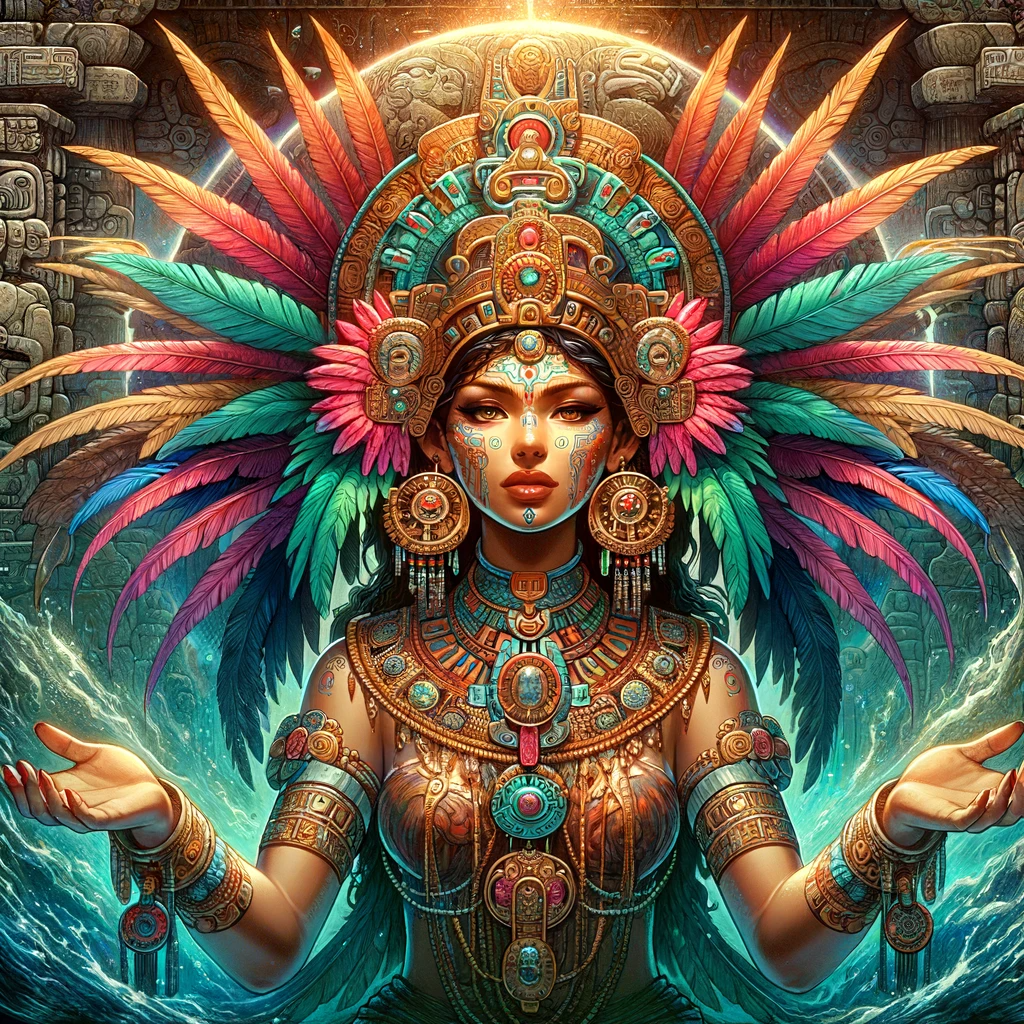
In the pantheon of Aztec deities, Tlazolteotl holds a unique and fascinating place. Known as the goddess of purification, filth, and sin, she embodies a complex interplay of themes related to both impurity and cleansing in Aztec mythology.
Origins and Mythology
Tlazolteotl, whose name can be translated as "Eater of Filth," is a deity whose origins can be traced back to the pre-Aztec civilizations in Mesoamerica, such as the Huastecs. She is often depicted as a woman wearing a cotton headdress, sometimes in her youthful form and other times as an old woman to represent the cycle of life.
Symbolism and Powers
The duality of Tlazolteotl's nature is central to understanding her significance. As a goddess of sin and dirt, she was associated with sexual misdeeds and moral impurities. However, this aspect is counterbalanced by her role as a purifier, capable of absolving individuals of their transgressions. This cleansing aspect is especially important, as it symbolizes renewal and the possibility of rebirth, both spiritually and physically.
In her role as a childbirth goddess, Tlazolteotl was invoked for protection during labor. She was also associated with the earth and agricultural fertility, linking her to the cycles of life and the renewal of nature.
Rituals and Worship
The worship of Tlazolteotl was marked by complex rituals, particularly those involving confession. The Aztecs believed that by confessing their sins to a priest in the temple of Tlazolteotl, they could cleanse their soul. This practice underscores the significant role of the goddess in maintaining moral and spiritual order within Aztec society.
Tlazolteotl was also celebrated in a specific ritual held every eight years, known as the "Feast of the Filth-Eating Goddess." During this ceremony, a priestess representing Tlazolteotl would "consume" the sins of the community, symbolically purifying them.
Artistic Representations
In Aztec art, Tlazolteotl is often depicted in two distinct forms: Tlazolteotl-Ixcuina and Tlazolteotl-Toci. Tlazolteotl-Ixcuina is usually shown as a young, seductive woman, often associated with the moon and the earth's fertility. On the other hand, Tlazolteotl-Toci, "Our Grandmother," is depicted as an older woman, symbolizing wisdom and the cleansing of sins.
Conclusion
Tlazolteotl's unique position as a deity of both impurity and cleansing reflects the Aztecs' sophisticated understanding of moral and spiritual balance. Her worship and iconography offer a glimpse into the complex religious beliefs of the Aztec people, where themes of sin, purification, and renewal were intricately intertwined. As a goddess who could both cause and absolve sin, Tlazolteotl remains a compelling figure in the study of Aztec mythology and religious practices.
Origins and Mythology
Tlazolteotl, whose name can be translated as "Eater of Filth," is a deity whose origins can be traced back to the pre-Aztec civilizations in Mesoamerica, such as the Huastecs. She is often depicted as a woman wearing a cotton headdress, sometimes in her youthful form and other times as an old woman to represent the cycle of life.
Symbolism and Powers
The duality of Tlazolteotl's nature is central to understanding her significance. As a goddess of sin and dirt, she was associated with sexual misdeeds and moral impurities. However, this aspect is counterbalanced by her role as a purifier, capable of absolving individuals of their transgressions. This cleansing aspect is especially important, as it symbolizes renewal and the possibility of rebirth, both spiritually and physically.
In her role as a childbirth goddess, Tlazolteotl was invoked for protection during labor. She was also associated with the earth and agricultural fertility, linking her to the cycles of life and the renewal of nature.
Rituals and Worship
The worship of Tlazolteotl was marked by complex rituals, particularly those involving confession. The Aztecs believed that by confessing their sins to a priest in the temple of Tlazolteotl, they could cleanse their soul. This practice underscores the significant role of the goddess in maintaining moral and spiritual order within Aztec society.
Tlazolteotl was also celebrated in a specific ritual held every eight years, known as the "Feast of the Filth-Eating Goddess." During this ceremony, a priestess representing Tlazolteotl would "consume" the sins of the community, symbolically purifying them.
Artistic Representations
In Aztec art, Tlazolteotl is often depicted in two distinct forms: Tlazolteotl-Ixcuina and Tlazolteotl-Toci. Tlazolteotl-Ixcuina is usually shown as a young, seductive woman, often associated with the moon and the earth's fertility. On the other hand, Tlazolteotl-Toci, "Our Grandmother," is depicted as an older woman, symbolizing wisdom and the cleansing of sins.
Conclusion
Tlazolteotl's unique position as a deity of both impurity and cleansing reflects the Aztecs' sophisticated understanding of moral and spiritual balance. Her worship and iconography offer a glimpse into the complex religious beliefs of the Aztec people, where themes of sin, purification, and renewal were intricately intertwined. As a goddess who could both cause and absolve sin, Tlazolteotl remains a compelling figure in the study of Aztec mythology and religious practices.